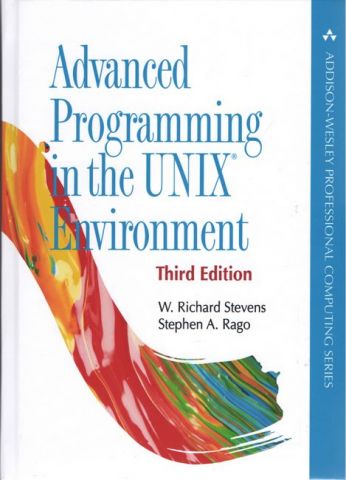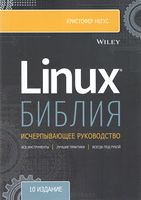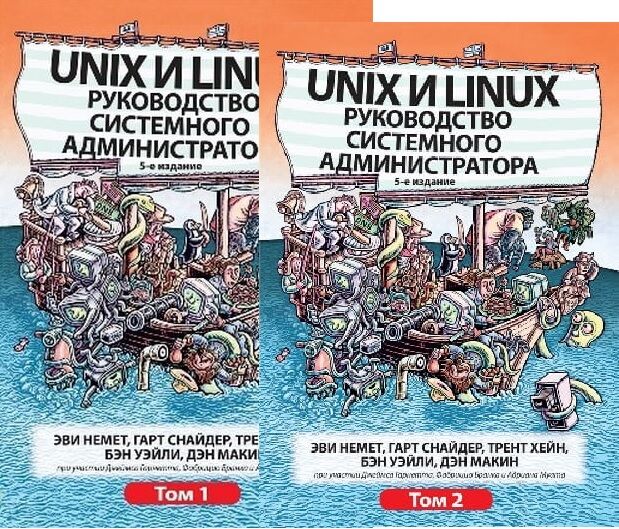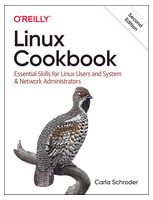Advanced Programming in the UNIX Environment (3rd Edition) 12315
-
ISBN978-0321637734
-
Видавництво
-
Автор
-
Рік2013
-
МоваАнглійська
-
ІлюстраціїЧорно-білі
Все про “Advanced Programming in the UNIX Environment (3rd Edition)”
Від видавця
For more than twenty years, serious C programmers have relied on one book for practical, in-depth knowledge of the programming interfaces that drive the UNIX and Linux kernels: W. Richard Stevens’ Advanced Programming in the UNIX® Environment. Now, once again, Rich’s colleague Steve Rago has thoroughly updated this classic work. The new third edition supports today’s leading platforms, reflects new technical advances and best practices, and aligns with Version 4 of the Single UNIX Specification.
Steve carefully retains the spirit and approach that have made this book so valuable. Building on Rich’s pioneering work, he begins with files, directories, and processes, carefully laying the groundwork for more advanced techniques, such as signal handling and terminal I/O. He also thoroughly covers threads and multithreaded programming, and socket-based IPC.
This edition covers more than seventy new interfaces, including POSIX asynchronous I/O, spin locks, barriers, and POSIX semaphores. Most obsolete interfaces have been removed, except for a few that are ubiquitous. Nearly all examples have been tested on four modern platforms: Solaris 10, Mac OS X version 10.6.8 (Darwin 10.8.0), FreeBSD 8.0, and Ubuntu version 12.04 (based on Linux 3.2).
As in previous editions, you’ll learn through examples, including more than ten thousand lines of downloadable, ISO C source code. More than four hundred system calls and functions are demonstrated with concise, complete programs that clearly illustrate their usage, arguments, and return values. To tie together what you’ve learned, the book presents several chapter-length case studies, each reflecting contemporary environments.
Advanced Programming in the UNIX® Environment has helped generations of programmers write code with exceptional power, performance, and reliability. Now updated for today’s systems, this third edition will be even more valuable.
About the Author
The late W. Richard Stevens was the acclaimed author of UNIX® Network Programming, Volumes 1 and 2, widely recognized as the classic texts in UNIX networking; TCP/IP Illustrated, Volumes 1-3; and the first edition of this book.
Stephen A. Rago is the author of UNIX® System V Network Programming (Addison-Wesley, 1993). Rago was one of the Bell Laboratories developers who built UNIX System V Release 4. He served as a technical reviewer for the first edition of Advanced Programming in the UNIX® Environment. Rago currently works as a research staff member in the Storage Systems Group at NEC Laboratories America.
Зміст
Заказать книгу на русском языке Contents Foreword to the Second Edition
xix
Preface
xxi
Preface to the Second Edition
xxv
Preface to the First Edition
xxix
Chapter 1. UNIX System Overview
1
1.1 Introduction 1
1.2 UNIX Architecture 1
1.3 Logging In 2
1.4 Files and Directories 4
1.5 Input and Output 8
1.6 Programs and Processes 10
1.7 Error Handling 14
1.8 User Identification 16
1.9 Signals 18
1.10 Time Values 20
1.11 System Calls and Library Functions 21
1.12 Summary 23
Chapter 2. UNIX Standardization and Implementations
25
2.1 Introduction 25
2.2 UNIX Standardization 25
2.2.1 ISO C 25
2.2.2 IEEE POSIX 26
2.2.3 The Single UNIX Specification 30
2.2.4 FIPS 32
2.3 UNIX System Implementations 33
2.3.1 UNIX System V Release 4 33
2.3.2 4.4BSD 34
2.3.3 FreeBSD 34
2.3.4 Linux 35
2.3.5 Mac OS X 35
2.3.6 Solaris 35
2.3.7 Other UNIX Systems 35
2.4 Relationship of Standards and Implementations 36
2.5 Limits 36
2.5.1 ISO C Limits 37
2.5.2 POSIX Limits 38
2.5.3 XSI Limits 41
2.5.4 sysconf, pathconf, and fpathconf Functions 42
2.5.5 Indeterminate Runtime Limits 49
2.6 Options 53
2.7 Feature Test Macros 57
2.8 Primitive System Data Types 58
2.9 Differences Between Standards 58
2.10 Summary 60
Chapter 3. File I/O
61
3.1 Introduction 61
3.2 File Descriptors 61
3.3 open and openat Functions 62
3.4 creat Function 66
3.5 close Function 66
3.6 lseek Function 66
3.7 read Function 71
3.8 write Function 72
3.9 I/O Efficiency 72
3.10 File Sharing 74
3.11 Atomic Operations 77
3.12 dup and dup2 Functions 79
3.13 sync, fsync, and fdatasync Functions 81
3.14 fcntl Function 82
3.15 ioctl Function 87
3.16 /dev/fd 88
3.17 Summary 90
Chapter 4. Files and Directories
93
4.1 Introduction 93
4.2 stat, fstat, fstatat, and lstat Functions 93
4.3 File Types 95
4.4 Set-User-ID and Set-Group-ID 98
4.5 File Access Permissions 99
4.6 Ownership of New Files and Directories 101
4.7 access and faccessat Functions 102
4.8 umask Function 104
4.9 chmod, fchmod, and fchmodat Functions 106
4.10 Sticky Bit 108
4.11 chown, fchown, fchownat, and lchown Functions 109
4.12 File Size 111
4.13 File Truncation 112
4.14 File Systems 113
4.15 link, linkat, unlink, unlinkat, and remove Functions 116
4.16 rename and renameat Functions 119
4.17 Symbolic Links 120
4.18 Creating and Reading Symbolic Links 123
4.19 File Times 124
4.20 futimens, utimensat, and utimes Functions 126
4.21 mkdir, mkdirat, and rmdir Functions 129
4.22 Reading Directories 130
4.23 chdir, fchdir, and getcwd Functions 135
4.24 Device Special Files 137
4.25 Summary of File Access Permission Bits 140
4.26 Summary 140
Chapter 5. Standard I/O Library
143
5.1 Introduction 143
5.2 Streams and FILE Objects 143
5.3 Standard Input, Standard Output, and Standard Error 145
5.4 Buffering 145
5.5 Opening a Stream 148
5.6 Reading and Writing a Stream 150
5.7 Line-at-a-Time I/O 152
5.8 Standard I/O Efficiency 153
5.9 Binary I/O 156
5.10 Positioning a Stream 157
5.11 Formatted I/O 159
5.12 Implementation Details 164
5.13 Temporary Files 167
5.14 Memory Streams 171
5.15 Alternatives to Standard I/O 174
5.16 Summary 175
Chapter 6. System Data Files and Information
177
6.1 Introduction 177
6.2 Password File 177
6.3 Shadow Passwords 181
6.4 Group File 182
6.5 Supplementary Group IDs 183
6.6 Implementation Differences 184
6.7 Other Data Files 185
6.8 Login Accounting 186
6.9 System Identification 187
6.10 Time and Date Routines 189
6.11 Summary 196
Chapter 7. Process Environment
197
7.1 Introduction 197
7.2 main Function 197
7.3 Process Termination 198
7.4 Command-Line Arguments 203
7.5 Environment List 203
7.6 Memory Layout of a C Program 204
7.7 Shared Libraries 206
7.8 Memory Allocation 207
7.9 Environment Variables 210
7.10 setjmp and longjmp Functions 213
7.11 getrlimit and setrlimit Functions 220
7.12 Summary 225
Chapter 8. Process Control
227
8.1 Introduction 227
8.2 Process Identifiers 227
8.3 fork Function 229
8.4 vfork Function 234
8.5 exit Functions 236
8.6 wait and waitpid Functions 238
8.7 waitid Function 244
8.8 wait3 and wait4 Functions 245
8.9 Race Conditions 245
8.10 exec Functions 249
8.11 Changing User IDs and Group IDs 255
8.12 Interpreter Files 260
8.13 system Function 264
8.14 Process Accounting 269
8.15 User Identification 275
8.16 Process Scheduling 276
8.17 Process Times 280
8.18 Summary 282
Chapter 9. Process Relationships
285
9.1 Introduction 285
9.2 Terminal Logins 285
9.3 Network Logins 290
9.4 Process Groups 293
9.5 Sessions 295
9.6 Controlling Terminal 296
9.7 tcgetpgrp, tcsetpgrp, and tcgetsid Functions 298
9.8 Job Control 299
9.9 Shell Execution of Programs 303
9.10 Orphaned Process Groups 307
9.11 FreeBSD Implementation 310
9.12 Summary 312
Chapter 10. Signals
313
10.1 Introduction 313
10.2 Signal Concepts 313
10.3 signal Function 323
10.4 Unreliable Signals 326
10.5 Interrupted System Calls 327
10.6 Reentrant Functions 330
10.7 SIGCLD Semantics 332
10.8 Reliable-Signal Terminology and Semantics 335
10.9 kill and raise Functions 336
10.10 alarm and pause Functions 338
10.11 Signal Sets 344
10.12 sigprocmask Function 346
10.13 sigpending Function 347
10.14 sigaction Function 349
10.15 sigsetjmp and siglongjmp Functions 355
10.16 sigsuspend Function 359
10.17 abort Function 365
10.18 system Function 367
10.19 sleep, nanosleep, and clock_nanosleep Functions 373
10.20 sigqueue Function 376
10.21 Job-Control Signals 377
10.22 Signal Names and Numbers 379
10.23 Summary 381
Chapter 11. Threads
383
11.1 Introduction 383
11.2 Thread Concepts 383
11.3 Thread Identification 384
11.4 Thread Creation 385
11.5 Thread Termination 388
11.6 Thread Synchronization 397
11.6.1 Mutexes 399
11.6.2 Deadlock Avoidance 402
11.6.3 pthread_mutex_timedlock Function 407
11.6.4 Reader-Writer Locks 409
11.6.5 Reader-Writer Locking with Timeouts 413
11.6.6 Condition Variables 413
11.6.7 Spin Locks 417
11.6.8 Barriers 418
11.7 Summary 422
Chapter 12. Thread Control
425
12.1 Introduction 425
12.2 Thread Limits 425
12.3 Thread Attributes 426
12.4 Synchronization Attributes 430
12.4.1 Mutex Attributes 430
12.4.2 Reader-Writer Lock Attributes 439
12.4.3 Condition Variable Attributes 440
12.4.4 Barrier Attributes 441
12.5 Reentrancy 442
12.6 Thread-Specific Data 446
12.7 Cancel Options 451
12.8 Threads and Signals 453
12.9 Threads and fork 457
12.10 Threads and I/O 461
12.11 Summary 462
Chapter 13. Daemon Processes
463
13.1 Introduction 463
13.2 Daemon Characteristics 463
13.3 Coding Rules 466
13.4 Error Logging 469
13.5 Single-Instance Daemons 473
13.6 Daemon Conventions 474
13.7 Client-Server Model 479
13.8 Summary 480
Chapter 14. Advanced I/O
481
14.1 Introduction 481
14.2 Nonblocking I/O 481
14.3 Record Locking 485
14.4 I/O Multiplexing 500
14.4.1 select and pselect Functions 502
14.4.2 poll Function 506
14.5 Asynchronous I/O 509
14.5.1 System V Asynchronous I/O 510
14.5.2 BSD Asynchronous I/O 510
14.5.3 POSIX Asynchronous I/O 511
14.6 readv and writev Functions 521
14.7 readn and writen Functions 523
14.8 Memory-Mapped I/O 525
14.9 Summary 531
Chapter 15. Interprocess Communication
533
15.1 Introduction 533
15.2 Pipes 534
15.3 popen and pclose Functions 541
15.4 Coprocesses 548
15.5 FIFOs 552
15.6 XSI IPC 556
15.6.1 Identifiers and Keys 556
15.6.2 Permission Structure 558
15.6.3 Configuration Limits 559
15.6.4 Advantages and Disadvantages 559
15.7 Message Queues 561
15.8 Semaphores 565
15.9 Shared Memory 571
15.10 POSIX Semaphores 579
15.11 Client-Server Properties 585
15.12 Summary 587
Chapter 16. Network IPC: Sockets
589
16.1 Introduction 589
16.2 Socket Descriptors 590
16.3 Addressing 593
16.3.1 Byte Ordering 593
16.3.2 Address Formats 595
16.3.3 Address Lookup 597
16.3.4 Associating Addresses with Sockets 604
16.4 Connection Establishment 605
16.5 Data Transfer 610
16.6 Socket Options 623
16.7 Out-of-Band Data 626
16.8 Nonblocking and Asynchronous I/O 627
16.9 Summary 628
Chapter 17. Advanced IPC
629
17.1 Introduction 629
17.2 UNIX Domain Sockets 629
17.2.1 Naming UNIX Domain Sockets 634
17.3 Unique Connections 635
17.4 Passing File Descriptors 642
17.5 An Open Server, Version 1 653
17.6 An Open Server, Version 2 659
17.7 Summary 669
Chapter 18. Terminal I/O
671
18.1 Introduction 671
18.2 Overview 671
18.3 Special Input Characters 678
18.4 Getting and Setting Terminal Attributes 683
18.5 Terminal Option Flags 683
18.6 stty Command 691
18.7 Baud Rate Functions 692
18.8 Line Control Functions 693
18.9 Terminal Identification 694
18.10 Canonical Mode 700
18.11 Noncanonical Mode 703
18.12 Terminal Window Size 710
18.13 termcap, terminfo, and curses 712
18.14 Summary 713
Chapter 19. Pseudo Terminals
715
19.1 Introduction 715
19.2 Overview 715
19.3 Opening Pseudo-Terminal Devices 722
19.4 pty_fork Function 726
19.5 pty Program 729
19.6 Using the pty Program 733
19.7 Advanced Features 740
19.8 Summary 741
Chapter 20. A Database Library
743
20.1 Introduction 743
20.2 History 743
20.3 The Library 744
20.4 Implementation Overview 746
20.5 Centralized or Decentralized? 750
20.6 Concurrency 752
20.7 Building the Library 753
20.8 Source Code 753
20.9 Performance 781
20.10 Summary 786
Chapter 21. Communicating with a Network Printer
789
21.1 Introduction 789
21.2 The Internet Printing Protocol 789
21.3 The Hypertext Transfer Protocol 792
21.4 Printer Spooling 793
21.5 Source Code 795
21.6 Summary 843
Appendix A. Function Prototypes
845
Appendix B. Miscellaneous Source Code
895
B.1 Our Header File 895
B.2 Standard Error Routines 898
Appendix C. Solutions to Selected Exercises
905
Bibliography
947
Index
955
Всі характеристики
- Видавництво
- Автор
- Категорія
- Номер видання3-е вид.
- Рік2013
- Сторінок1024
- Формат170х240 мм
- ОбкладинкаТверда
- Тип паперуОфсетний
- МоваАнглійська
- ІлюстраціїЧорно-білі
- Оригінальна назваAdvanced Programming in the UNIX Environment (3rd Edition)
Товар входить до категорії
-
Самовивіз з відділень поштових операторів від
45 ₴ -80 ₴ -
Доставка поштовими сервісами - тарифи перевізника













Рецензії